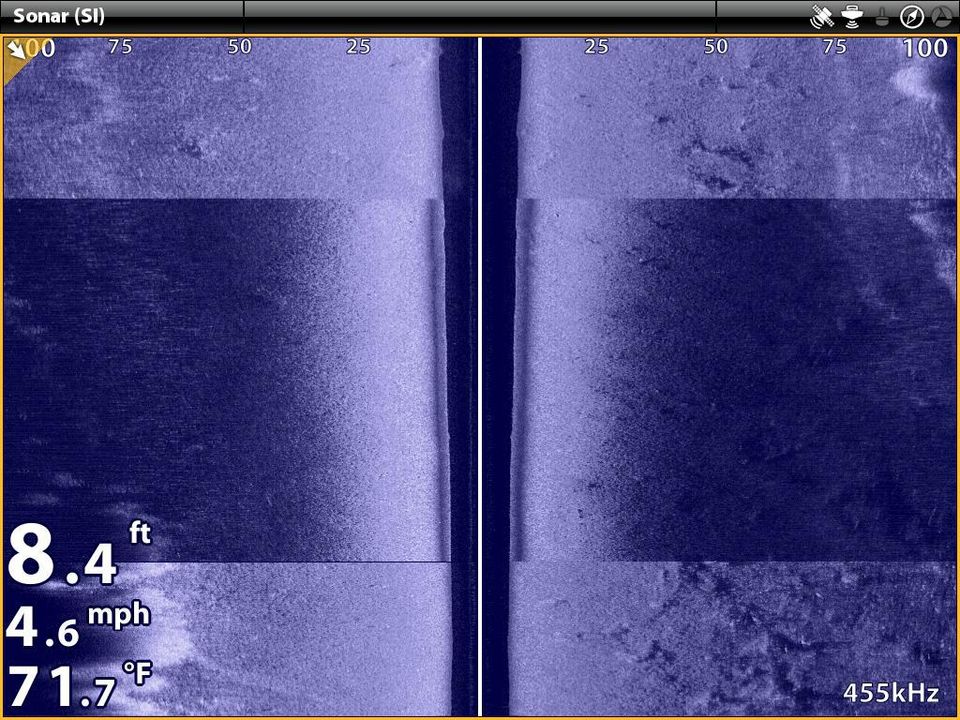Side Imaging frequencies: 455 and 800 kHz
455 kHz vs 800 kHz....what's the difference?
These two sonar frequencies are the ones typically employed for high-resolution imaging techniques like Side Imaging, Down Imaging, and 360 Imaging. On some Humminbird units, both frequencies are available, while others are limited to 455 kHz only. How do these imaging frequencies differ from the angler's perspective?
In general terms, 455 kHz will give you a longer useful range than 800 kHz. You can see an example of that in this image from my Humminbird ONIX system. Side Imaging collected with 455 kHz is shown at the top and bottom, while 800 kHz SI is through the middle. Notice that with 455 kHz, I can collect clear, easy-to-see images all the way to the edge of my SI range (100 ft in this case), while with 800 kHz, my clear images are limited to the middle of the display, perhaps not extending well beyond 50 ft.
Also, in general terms, 800 kHz will provide a slightly higher resolution image than 455 kHz. Under most circumstances, this will be most obvious when inspecting the image of a piece of structure; those images *may* appear slightly clearer (sharper, or less fuzzy along the fringes) when using 800 kHz.
So what should an angler choose? For the vast majority of my work, I select 455 kHz for Side Imaging. When running ONIX, I select 800 kHz for Down Imaging while reserving 455 kHz for Side Imaging. This gives me the best balance between range and resolution.
These two sonar frequencies are the ones typically employed for high-resolution imaging techniques like Side Imaging, Down Imaging, and 360 Imaging. On some Humminbird units, both frequencies are available, while others are limited to 455 kHz only. How do these imaging frequencies differ from the angler's perspective?
In general terms, 455 kHz will give you a longer useful range than 800 kHz. You can see an example of that in this image from my Humminbird ONIX system. Side Imaging collected with 455 kHz is shown at the top and bottom, while 800 kHz SI is through the middle. Notice that with 455 kHz, I can collect clear, easy-to-see images all the way to the edge of my SI range (100 ft in this case), while with 800 kHz, my clear images are limited to the middle of the display, perhaps not extending well beyond 50 ft.
Also, in general terms, 800 kHz will provide a slightly higher resolution image than 455 kHz. Under most circumstances, this will be most obvious when inspecting the image of a piece of structure; those images *may* appear slightly clearer (sharper, or less fuzzy along the fringes) when using 800 kHz.
So what should an angler choose? For the vast majority of my work, I select 455 kHz for Side Imaging. When running ONIX, I select 800 kHz for Down Imaging while reserving 455 kHz for Side Imaging. This gives me the best balance between range and resolution.
